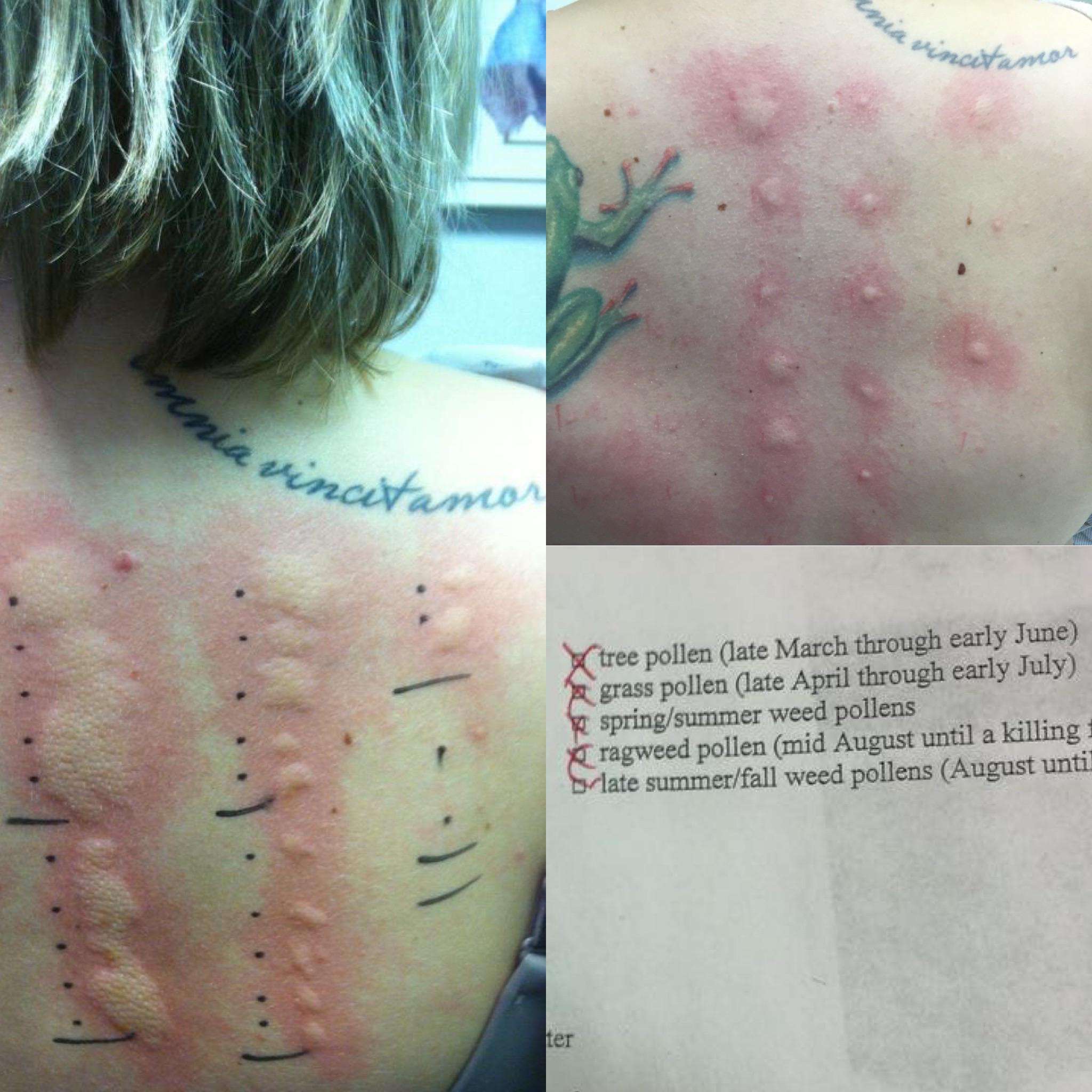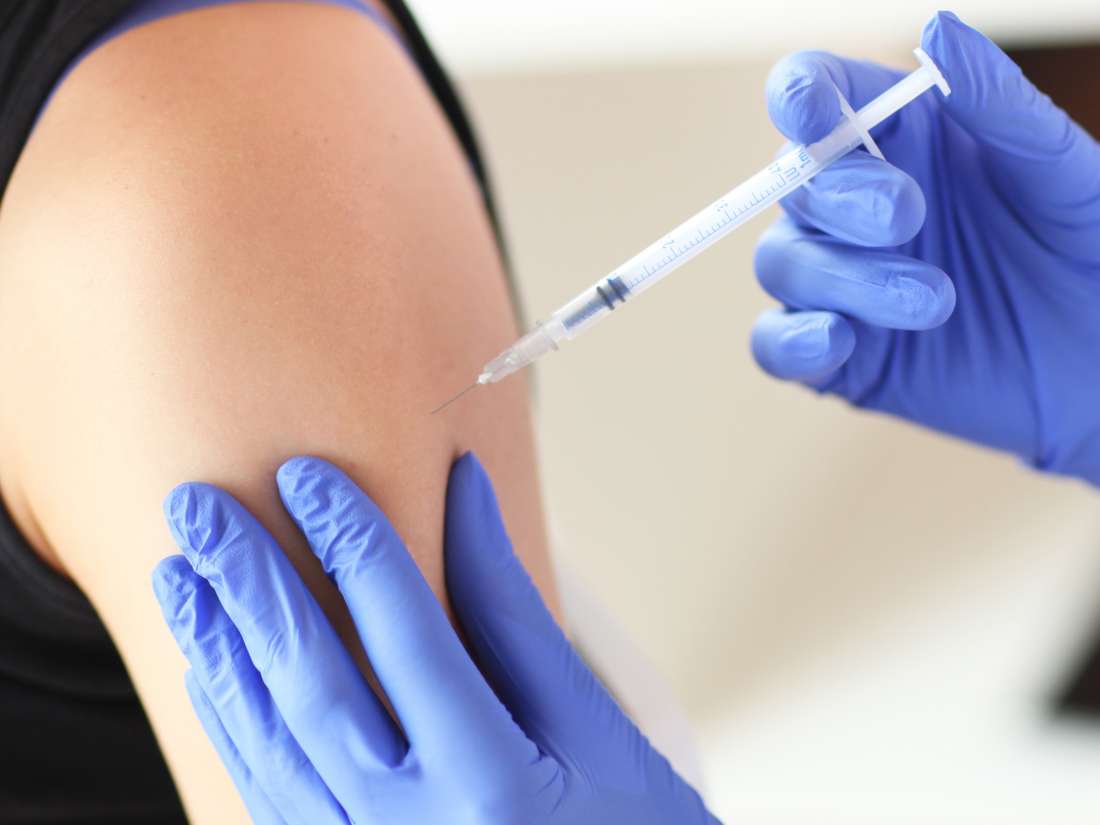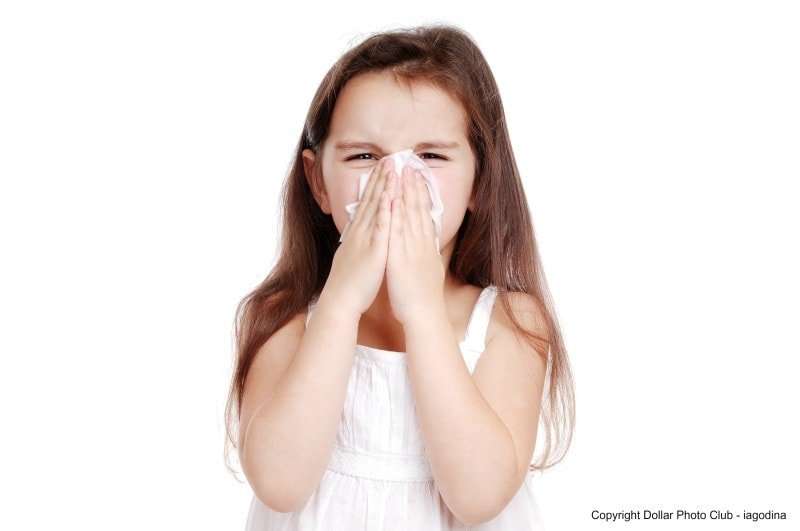How To Know Its Time To Try Immunotherapy
When is the right time to try allergy immunotherapy? There are several signs you can look for that can help you determine whether the time is right:
- Allergy medication is no longer effective
- Side effects from allergy medication is interfering with quality of life
- Allergy symptoms are exacerbating a comorbid condition
- Difficulty avoiding allergens
Immunotherapy is also a viable option for patients who have a fear of needles or who do not want to receive shots once or twice a week. If you have questions about allergy immunotherapy, discuss your options with an allergist right away.
Overview: How The Immune System Functions
Your immune system is designed to keep your body in peak performance and defend against foreign intruders such as bacteria, viruses, and allergens . The true soldiers of the immune system are white blood cells, which stage an attack against anything not recognized by the body. For allergy sufferers, the immune response recognizes harmless particles as a threat and mounts a response.
Because this response can actually do significant damage , it is important to regulate the immune system so that it only responds to actual threats rather than insignificant environmental particles. For allergy patients, this involves something called desensitization the process of repeatedly exposing the immune system to a particle it originally recognized as harmful. Over time, the immune response will become conditioned to understand that this particle is not a threat and thus will not mount an attack.
Allergies and the Immune System
The immune systems first line of defense is called innate immunity. Also known as natural immunity, innate immunity does not require previous exposure to a foreign particle to recognize it as a potential threat. The innate response is immediate, and it will mount an attack against any foreign substance invading the body. While this is helpful for invaders such as viruses, it is not so helpful in response to harmless allergens.
Why Allergen Immunotherapy Works
Desensitization Therapy for Environmental Allergies
Desensitization Therapy for Food Allergies
How Do Allergy Shots Help
Allergy shots help the body build immunity to specific allergens, so it’s not as bothered by them. Allergy shots also can help kids who have allergies andasthma have fewer asthma flare-ups.
Allergy shots contain a tiny amount of a purified form of the allergen causing problems. Doctors increase the dose slowly over the first 36 months. This lets the immune system safely adjust and build immunity to the allergens. This is called the buildup phase.
The highest effective safe dose becomes a child’s monthly maintenance dose. Health care providers give this to the child for about 3 to 5 years. Most kids will need fewer shots over time.
Some kids’ allergy symptoms ease during the buildup phase. Others don’t feel better until they’re into the maintenance phase. After years of getting allergy shots, some may have lasting relief from symptoms.
Recommended Reading: Cetirizine For Allergy
How Do You Prepare For An Allergy Shot
Before you start allergy shots, youll need a full evaluation. The doctor needs to test your allergies to know exactly which substances to use in the shots.
For example, if you have allergies during pollen season, theyll test for which types of pollen cause your symptoms. Ragweed, grasses, and various tree pollens are common culprits.
Allergy testing usually consists of skin pricking. During a skin prick test, your doctor will prick the skin on your back or forearm with several types of allergens to determine which ones cause reactions.
A type of specialist known as an allergist or an immunologist will conduct all testing and treatment with allergy shots.
Once your doctor has identified your allergens, youll start receiving allergy shots. The process is broken down into two phases:
- buildup
- maintenance
Immunotherapy Injections Versus Sublingual Immunotherapy

Immunotherapy has been given by injection for more than 100 years and many studies prove that it is effective. A number of studies published in the last five years have shown that very high dose sublingual immunotherapy , where allergen extracts are retained under the tongue for a few minutes, then swallowed, can also be effective. SLIT has a longer history of use in Europe than in Australia and New Zealand, where it is used more commonly than injected immunotherapy.
The allergen extracts currently available in Australia and New Zealand for oral and injected therapy are very potent, and are NOT the extremely weak and ineffective extracts used by some medical practitioners ten or more years ago.
Recommended Reading: Allergy Medicine Nasal Spray
How Can Parents Help
Doctors give allergy shots with needles that are smaller than those used for most childhood vaccinations, so they’re less painful. Still, for some kids a shot can seem scary. A parent’s positive and supportive attitude can help. Treatment goes much better when parents are confident and committed to the immunotherapy.
While getting a shot, your child can squeeze your hand, sing a song, watch a video, or use another distraction that will take the focus off the injection.
Understanding the benefits of allergy shots and how they work will help you and your child accept them as routine.
Allergic Pathophysiology And Method Of Action
Within seconds to minutes of allergen exposure, mast cells initiate granule exocytosis, releasing preformed histamine, serine proteases, and proteoglycans. These series of cellular events give rise to immediate allergic symptoms that peak within 15-30 minutes and affect the skin, eyes, and both upper and lower respiratory systems. Mast cells also synthesize prostaglandins and leukotrienes and release additional proinflammatory mediators and cytokines, which increase vascular permeability and promote recruitment of other effector cells.
A second, or late phase, of allergic inflammation can occur approximately 6-12 hours after allergen exposure. This late allergic response is the result of activated CD4+ T cells, eosinophils, neutrophils, and basophils leaving the bloodstream and infiltrating the local tissue upon allergen exposure. Each of these cell types contains important mediators in the allergic response: Basophils have histamine-containing granules eosinophils contain major basic protein and leukotrienes, particularly leukotriene C4 and neutrophils produce lipids, cytokines, and proteases that directly damage tissues, including mucosal membranes, and further augment mast cell and eosinophil activity.
Don’t Miss: Can I Take Cetirizine Hydrochloride And Fexofenadine Hydrochloride Together
What Immunotherapy Treatments Are Available
Immunotherapy is a treatment option for some allergy patients. There are two common types of immunotherapy. They are allergy shots and sublingual immunotherapy .
Allergy shots involve giving injections of allergens in an increasing dose over time. The person becomes progressively less sensitive to that allergen. Allergy shots can work well for some people with allergies to pollen, pets, dust, bees or other stinging insects, as well as asthma. Allergy shots do not usually work well for allergies to food, medicines, feathers, or for hives or eczema.
SLIT is another way to treat certain allergies without injections. Allergists give patients small doses of an allergen under the tongue. This exposure improves tolerance to the substance and reduces symptoms. SLIT is fairly safe and effective for the treatment of nasal allergies and asthma. SLIT tablets are currently available for dust mites, grass and ragweed. Talk to your allergist if you want to learn more about SLIT. While allergy shots are fairly safe, there is a chance for a severe, life threatening allergic reaction to the injections, so they must always be given in an allergists office under observation from a medical professional.
Medical Review March 2018.
Allergic Emergency
If you think you are having a severe allergic reaction , use your self-injectable epinephrine and call 911.
Do not delay. Do not take antihistamines in place of epinephrine. Epinephrine is the most effective treatment for anaphylaxis.
Pros And Cons Of Allergy Shots
Many allergy sufferers feel differently based on the time of year. Outdoor allergies may be mild in some months, then more severe in others as pollen counts change. How you feel depends on the season, your specific allergen triggers and how much time you spend outdoors.
It neednt be that way, though, as effective treatments are available.
An allergy is a reaction of your immune system to a foreign substance. It can be pollen, dander from pets, like dogs and cats, to different types of food. When an allergic reaction occurs, it is because your immune system manufacturers substances called antibodies that respond to a substance called an allergen. The antibodies produced attack the allergen that your immune system reacts to, as it has identified them as harmful even though the immune system is mistaken. When your immune system makes antibodies, your body may have a reaction that inflames your skin, your airways, or your digestive system.
You May Like: Children’s Claritin Non Drowsy
Which Allergies Can Allergy Shots Treat
Allergy shots cant treat all allergies, but they can help those with allergies to several different pollens including grasses, trees, and weeds. They are also beneficial for molds, house dust mites, cockroaches and pet dander.
If you have general insect allergies, including an allergy to yellow jackets, hornets, wasps, bees or fire ant, allergy shots could also be a good option.
If you struggle with seasonal allergies, talk to your doctor or allergist about immunotherapy injections.
Deborah M Hussey Freeland
1Sean N. Parker Center for Allergy and Asthma Research, Stanford University
2Division of Pulmonary and Critical Care Medicine, Department of Medicine, Stanford University
1Sean N. Parker Center for Allergy and Asthma Research, Stanford University
2Division of Pulmonary and Critical Care Medicine, Department of Medicine, Stanford University
3Division of Allergy, Immunology and Rheumatology, Department of Medicine, Stanford University, Stanford, California 94305, USA.
Also Check: Does Cetirizine Hcl Make You Drowsy
What Is Food Allergy Immunotherapy
In food allergy oral immunotherapy , patients are given the food they are allergic to. It starts with a tiny amount and then gradually larger amounts. This helps the body become desensitized to food. Currently peanut allergy immunotherapy is approved. Other allergens including egg and milk are being studied for OIT.
What Is Allergen Immunotherapy

Allergen immunotherapy is a treatment procedure for preventing/reducing allergic reactions to specific allergens. Immunotherapy reduces the dependence on medications for symptom relief.
Some people tend to develop severe allergic reactions to common substances which normally do not provoke an immune reaction in most people. Immunotherapy is a long-term treatment and gradually makes a persons immune system more tolerant to the allergens.
Allergen immunotherapy is of two types:
- Subcutaneous: Injections given in the tissue beneath the skin, usually in the upper arm.
- Sublingual: Tablets which the patient keeps under the tongue for a couple of minutes before swallowing. Sublingual drops may also be also used, but are not approved by FDA.
Don’t Miss: Desloratadine Vs Cetirizine
Introduction Of Recombinant Allergens For It
SCIT is limited by the lack of a standardized extract for many allergens and the batch-to-batch variation in allergen concentration. The availability of recombinant allergens makes it possible to treat allergic patients with identical, consistent vaccines . Other advantages of recombinant allergens include: immunization with vaccines tailored to the major allergens to which the patient is allergic administration of allergens in optimal doses more accurate dosing and the possibility of modifying the structure of IgE-binding allergen epitopes, thereby increasing the safety of allergen immunotherapy. Recombinant allergens are not yet used in medicine since like other recombinant proteins, they must undergo rigorous clinical trials before they are available for clinical use.
In a murine model, vaccination with a recombinant allergen before sensitization resulted in a state of immune deviation–a shift from a TH 2, IgE response to a TH 1, IgG2a response . Because the immune system of neonates and adult mice is similar in terms of their ability to develop immune deviation, and because allergic sensitization occurs predominantly in the first two years of human life, using recombinant allergens for immunotherapy holds promise and needs further investigation .
Safety And Adverse Effects
SLIT, on the other hand, has been characterized by a high degree of safety as its most notable feature. Mild, short lasting and self resolving local side effects include oral cavity pruritis, throat irritation, rhinitis, itchy eyes, nausea, and GI complaints . Systemic side effects include asthma exacerbation and rhinoconjunctivitis . A meta-analysis done in 2009 to assess the safety of SLIT at the beginning of pollen season and during the pollen season found it to be comparable to conventional pre-seasonal SLIT . This study included 34 children with allergic rhinitis and 36 adults with allergic asthma. Out of 54 AEs reported, most were short lasting and self-resolving local effects, while systemic effects were mild, and no anaphylactic reactions were reported . Although anaphylaxis was not an adverse event of any of the studies done in the past, individual case reports have been cited. The first one was reported in 2006 and involved generalized pruritis, dyspnea, and dizziness on the second day of therapy . Occurrences of anaphylaxis on the first dose as well as after maintenance doses have also been reported. Although this type of severe AE is not commonly seen in SLIT, it still must be kept in mind when offering this therapy to patients.
Don’t Miss: Benadryl Skin Allergies
Standardization Storage And Mixing Of Allergen Vaccines
Ideally, vaccines should be standardized with a defined potency and labeled with a common unit.15 Such standardization would eliminate the variability in vaccines and allow for safer and more effective dosing. The Bioequivalent Allergy Unit , which is assigned by the U.S. Food and Drug Administration based on quantitative skin testing performed on a reference population of allergic patients known to be highly skin-testreactive to that allergen, reflects clinical potency and is currently used for standardization of vaccines.
Standardized allergens available in the United States include cat dander, grass pollens, dust mites, and short ragweed pollen. Unstandardized vaccines may vary widely in biologic activity based on manufacturer and by lot, depending on the allergen content of the raw material and the conditions of extraction. Furthermore, the labeling conventions of Protein Nitrogen Units or weight by volume reflect protein content but not allergenic potency. Research is underway on new technologies for DNA and protein analysis that would allow an allergen vaccine to be characterized by the content of the major allergen and the consistency of each lot to be monitored accurately.
Information from references 16 and 17.
How Does The Process Work
The first step is to confirm a patients allergies through allergy testing. Then, a custom-mixed vial of drops is prepared for the patient. The patient takes drops under the tongue daily. During the first four months, called the escalation phase, the dosage is gradually increased. After that, in the maintenance phase, the patient takes the same dose of drops each day.
Don’t Miss: Antihistamine Generic Name
What Happens To Patients With Nut Allergy
When people have nut allergies, their body’s immune system, which normally fights infections, overreacts to proteins in the nut. If people eat something that contains nuts, their body thinks these proteins are harmful invaders and responds by working very hard to fight off the invader. This causes an allergic reaction.
Even a small amount of peanut or tree nut protein can set off a reaction. However, allergic reactions from breathing in small particles of nuts or peanuts are rare. That’s because people usually have to eat the food to cause a reaction. Most foods containing peanuts don’t allow enough of the protein to escape into the air to cause a reaction. Just the smell of foods containing peanuts won’t cause a reaction because the scent doesn’t contain the protein.
Immunotherapy Administration And Schedules
Allergen-specific immunotherapy carries the risk of anaphylactic reactions and, therefore, should only be prescribed by physicians who are adequately trained in the treatment of allergy and the use of immunotherapy . The injections must be given where a physician is present, and in clinics that are equipped to manage possible life-threatening reactions.
Before immunotherapy is started, patients should understand its nature, benefits, risks, and costs. Counseling should also include the expected onset of efficacy and duration of treatment, as well as the risk of anaphylaxis and importance of adhering to the immunotherapy schedule. An assessment of the patientâs current health status should be made before the administration of immunotherapy injections to determine whether there have been any recent changes in the patientâs health that may require modifying or withholding treatment .
Table 2 Timing and concentration of suspect pollens and mould spores in various geographic areas across Canada
Sublingual immunotherapy has been shown to have a sustained benefit once treatment has been discontinued, supporting its disease-modifying properties . While there are few studies directly comparing the efficacy of sublingual vs. subcutaneous immunotherapy, a 2013 meta-analysis that indirectly compared systematic reviews found that both forms of immunotherapy had significant benefits over placebo, however one modality could not conclusively be deemed superior to the other .
Read Also: Robitussin Decongestant And Expectorant
Get Tested For Allergies
If you have significant atopic dermatitis that is not improving with moisturizing regimens outlined above, you should seek evaluation by an allergist who, depending on your history, may recommend allergy testing to aeroallergens or in rare cases even to food allergens.
What Is Immunotherapy And Can It Cure My Allergies

If you have allergies, youre not alone. This common problem is the sixth leading cause of chronic illness in the United States, and it affects more than 50 million Americans. Because the prevalence of allergies is also constantly on the rise, an ever-increasing number of people can expect to develop them with each passing year.
At Advanced Allergy & Asthma in Ogden, Utah, our talented team of allergists is proud to offer innovative immunotherapy treatment, a safe and highly effective way to boost your tolerance to irritating allergens, reduce the likelihood of a serious reaction, and even put an end to your symptoms altogether. Here, we explain how it works.
Also Check: Diphenhydramine Vs Pseudoephedrine

